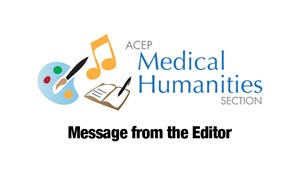
Letting Ali Die
Ali* was on bed 16. He was 10 months old and critically sick. Till the day before, per his mother, Ali had been quite normal. He had been taken to a neighbor’s house by the neighbor’s daughter. This was not the first time the neighbor’s child had carried Ali to her house, to play with him. However, what was different this time around was that the child brought Ali back soon after taking him, presumably because he was fussy. That occurrence in itself could have been a potent reminder for the parents to suspect something. The parents, unfortunately, let hours pass assuming that Ali was just colicky. When Ali went from being fussy to lethargic his parents panicked and rushed him to a nearby clinic. That facility was far from optimal to take care of the baby, given his critical condition, hence the parents decided to bring Ali to the emergency room (ER). Ali was in a terrible condition hence he was rushed directly to ‘resus’ (resuscitation or shock room). He was gasping, periodically, and there was hardly any movement of his body, none of his eyes. These were ominous signs. Ali was immediately ‘tubed’ (intubated) and moved to the CT-scanner. What that revealed was a massive bleed in his brain and infarcted (dead) brain tissue.
Could the bleed in the brain and subsequent coma be explained by trauma of some kind? Yes it could. Could it have been an accident? Yes. But what was more concerning: trauma inflicted on Ali, although no obvious signs of bruising or swelling were evident on his body or scalp. My years of practice in the pediatric ER have made me realize that as a child advocate I must assume violence has been inflicted on the child, especially in situations where brain imaging reveals bleeding. There might not have been any way to prove that Ali had been abused, but as his ER physician, my index of suspicion remained high.
What concerned me more when I questioned Ali’s parents was that in the interim 18 hours they had still not interrogated their neighbor’s child regarding what exactly had transpired.
Over the course of that ER shift I observed Ali very closely. He was being ‘bagged’: a nurse was forcing oxygen into the baby’s lungs through the tube that we had placed in his wind pipe. A better situation would have been a ‘vent’ (ventilator). However, when one is in a developing country where vents are a costly luxury in the intensive care unit (ICU), the pediatric ER is way down on the pecking order for those devices.
Ali did not move at all during the time I observed him. His vital signs, heart rate and blood pressure, specifically, were precariously maintained by medications that we had him on. He urgently needed that vent but there were none available then in the ICU of the hospital. We were certainly not doing the child any favor by bagging, adding insult to injury because of the trauma to the lungs through such a primitive process of managing Ali’s “breathing.” But what else could we do?
Interestingly, from another perspective, Ali did not need that vent. The lack of oxygen, bleeding and dead tissue that had already occurred in the brain was likely going to put Ali in a vegetative state. The vent was simply going to prolong the inevitable. By then Ali had been seen by neurosurgery, neurology and critical care, and consensus had been reached: a grim outlook that had already been discussed at length with the parents. Ali’s parents seemed to be in denial. More so the mother. I was surprised that she was quite convinced that the baby would miraculously recover soon. That was why she had refused to sign the ‘do not resuscitate’ (DNR) form. She validated her decision to maintain full life support for Ali because her religion and her God wouldn’t allow her to do otherwise.
It is good to have hope, but I believe a rational approach to hope must be exercised, especially in the ER given such humongous odds of poor outcomes. I felt frustrated by the status quo. And it was then that I took the matter into my own hands, and approached Ali’s mother. In my Anglicized Urdu I explained to her, with as much objectivity that I could muster, Ali’s poor prognosis. I told her that if Ali were to survive the ER stay and be admitted to an ICU on a ventilator, chances were that he would not grow up to be a normal child. I also mentioned the substantial costs of ventilator usage in an ICU setting. She told me to go away and return when Ali’s father was back. Ali’s father was on a wild goose chase to find a vent in a credible pediatric ICU in some other hospital in Karachi. A tall order. I did return to Ali’s bedside once his father was back. I repeated all my long term concerns for Ali. I didn’t expect much “success,” as had been my general experience with parents in the ER that I used to work in while I was in the United States. However, when Ali’s father reported that he was waiting for Ali’s aunt, a physician, to get to the ER to make a decision, I felt some hope.
It’s strange that I strongly felt like advocating for Ali by not escalating his care; by discouraging placement on a vent, primarily given what the future for him looked like. In my 5-year work experience in the ER in the U.S., I had never spoken to parents about DNR status. I had never seen a patient die in the ER there during my shift. That was my gauge of success. Resuscitating every critically sick child and placing them on vents, regardless of likely outcomes, favorable or unfavorable. Here, in Pakistan, for the first time in my life, I was cognizant of what I, as a medical practitioner, was doling out. And it was not always in the patient’s best interests.
While I was lost in thought, comparing my medical practice of years in the U.S. to just one year of practicing in Pakistan, Ali’s aunt got to his bedside. She took stock of the situation, upheld my thought process and made the decision for Ali of not having him moved elsewhere. She convinced Ali’s father to sign the DNR decree. What was amazing: she convinced Ali’s parents to “extubate” (pull out the breathing tube), stop all cardiac support medications, and to let Ali die…
I was even more amazed when Ali’s parents consented. I felt an intangible optimism. Perhaps an inappropriate feeling given the situation, but I couldn’t help it.
“Will he struggle to breathe prior to dying?” asked Ali’s mother.
“I don’t know,” I said, while I frantically hoped that he would not struggle.
“How long will it take,” asked Ali’s father.
“I don’t know,” said I, hoping that it would not be a protracted process.
When it was time to pull out the tube, I wanted the ICU team to be there; I wanted them to pull out the tube. But being the most senior and, presumably, the most experienced in dying and death, the burden fell on me.
The tube came out without any resistance.
“What resistance were you really expecting?” I thought to myself. It wasn’t like the tube, though Ali’s lifeline, was tied to his trachea. I then stopped his cardiac support medications and just observed him and his breathing. But then there was no breathing as there was no bagging. Yet his heart rate chugged along in the 70s (beats per minute), slow for a 10-month-old baby, but expected, given his critical condition. His oxygen saturation remained in the 90s initially, but then started dropping: 80s, 70s, and then hung around there, as if providing company to the heart.
“Give him a chance; he might live through this and what happens later is not really for you to worry about,” said one inner voice.
But I stood my ground and I quelled the urge to “re-tube” him.
I watched Ali for another 20 minutes; he remained limp, his pupils completely unreactive.
I also continued to closely follow the cardiac monitor.
“Why is he still on the monitor? Take him off,” my inner voice chimed in again.
Although I came really close to turning off the monitor, I was obsessed with that screen. I was willing it to show what I was hoping.
And then Ali’s pulse started dropping: 60s, 50s, 40s, 30s, 20s, 10s and then a flat line.
Ali did not struggle.
He passed away…peacefully.
It was God’s will.
*Disclaimer: Names, ages and details of events bearing resemblance to someone real is purely coincidental.
Asad Mian, MD, FACEP



